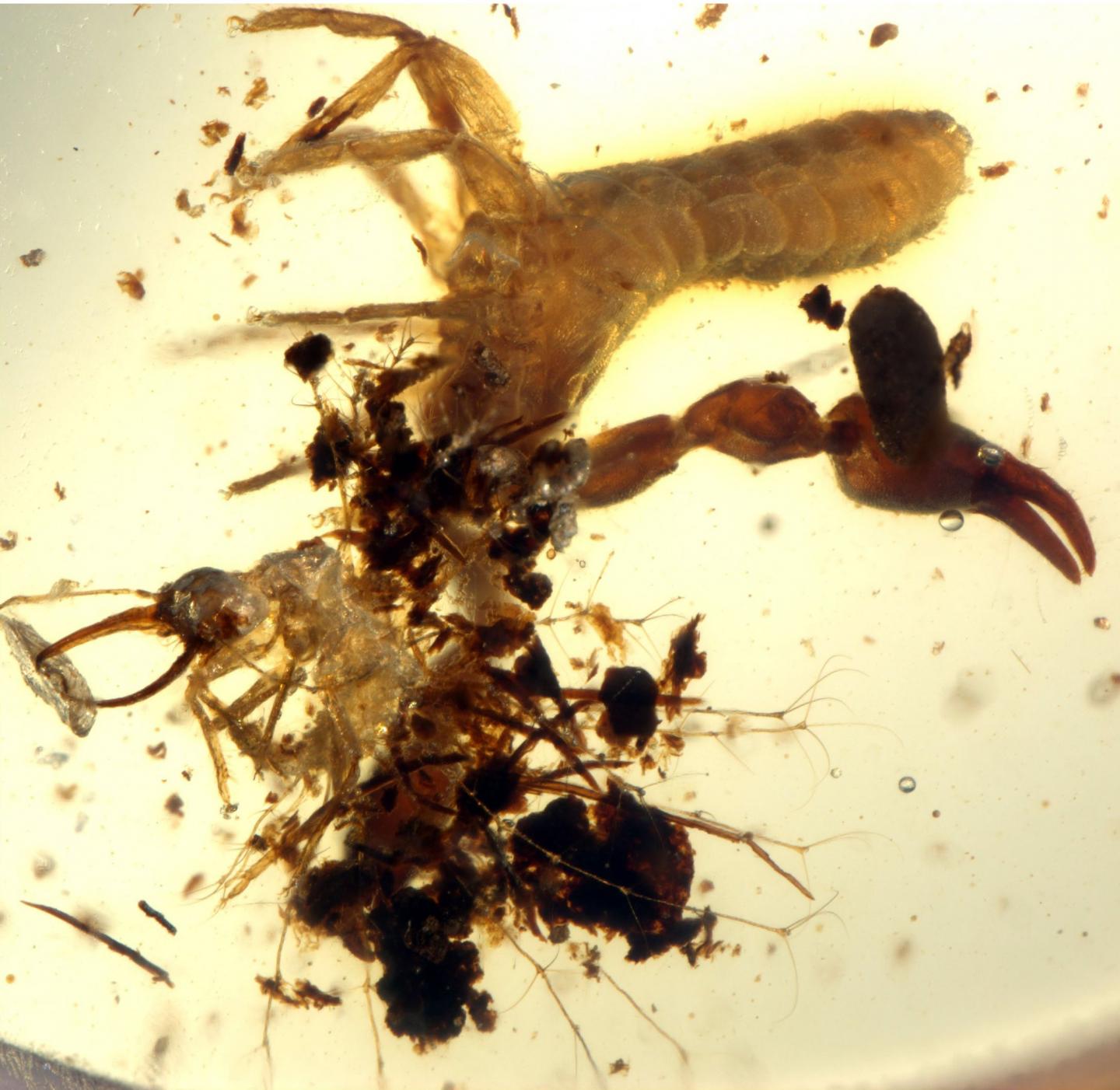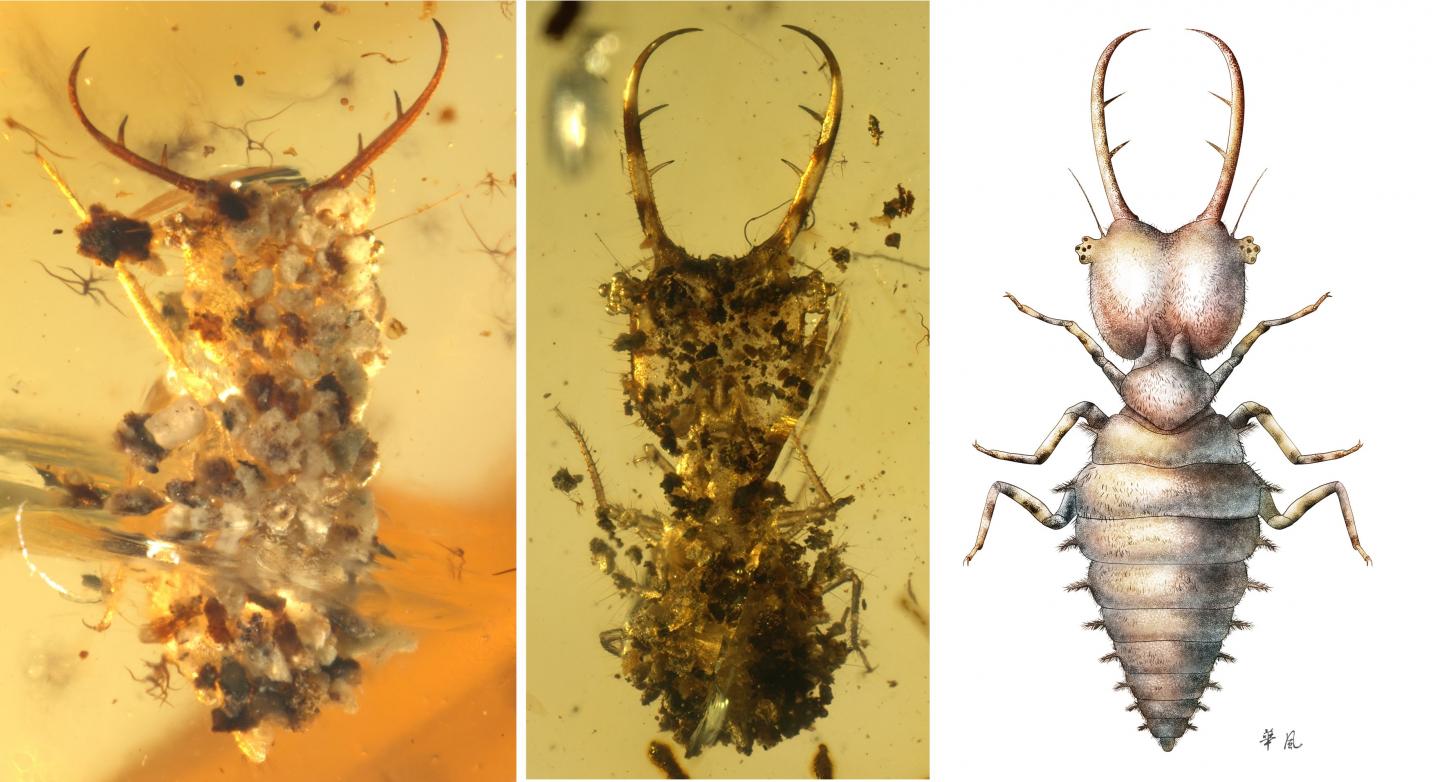New evidence shows that insects were using camouflage to hide from their predators as many as 100 million years ago — and wow did these ancient bugs ever employ some strange forms of deception.
A lacewing larva trapped in amber (left) and an artist’s reconstruction (right). (Image: Bo Wang, Nanjing)
During the Cretaceous period, insects were already using a panoply of tricks to evade their predators, a new study in Science Advances shows. Evidence of camouflage in insects is quite rare, so this is an exceptional finding. By meticulously studying 35 samples of insects preserved in amber, an international team of researchers were able to uncover all sorts of deception, including bugs that cloaked themselves in pieces of plants, grains of sand and even the remains of prey.

This sample of amber contained traces of pseudoscorpions, scale insects, psyllids as well as various kinds of plant material. (Image: Bo Wang, Nanjing)
The larva of the ancient lacewing employed a particularly devious technique. After attacking a pseudoscorpion and using its powerful mouthparts to suck it dry, the larva placed the remains of its dead victim on its back.
“With this ‘disguise’, the lacewing larva pretends to be someone completely different,” noted study co-author Jes Rust of the Steinmann-Institute of the University of Bonn. “Using the pieces of its prey, it even takes on the smell of the pseudoscorpion.”

Left: A well camouflaged insect with small stones. Middle: Carbonized plant residue used as camouflage. Right: Reconstruction of an uncamouflaged owlfly larva (Neuroptera). (Image: Bo Wang, Nanjing)
Other larvae fashioned camouflaged shields for themselves using grains of sand, which likely served the dual purpose of protecting them from spiders. In fact, their limbs were adapted for this very purpose; they could actually shift their legs about 180 degrees to transport the grains of sand onto their backs.
Some larvae lived concealed and camouflaged in ground litter or under stones, lying in wait for prey. Other insects cloaked themselves using plant residue, wood fibres, dust and lifeless shells of their victims. The researchers were stunned to see such complex behaviours in creatures that lived 100 million years ago.
The samples, which came from Myanmar, France and Lebanon, also show that many of these animals evolved these strategies independent of one another. As Rust explained, “Apparently, camouflage offers many advantages for the user, for which reason it was ‘invented’ multiple times during evolution.” And indeed, some of the tactics observed in these insects can still be found today.
